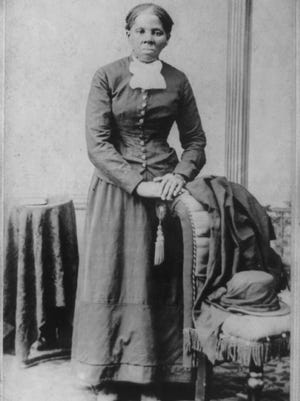Harriet Tubman and the color of money
Harriet Tubman: an Eastern Shore native, a giant of the abolitionist movement, an icon of civil disobedience.
Harriet Tubman was, above all else, courageous and resolute. She broke the law because the law itself was broken. That’s called civil disobedience, and it's socially transformational, and heartening and encouraging to watch and read. It is the essence of Tubman, who has changed the color of money.
She did it by stealing and by conspiring with those moved to violence – high crimes, no doubt. But the times were different then. Slavery, the country’s ugly scourge, was legal in some states. She escorted the enslaved – human beings bought and sold as property – to freedom at a tremendous personal risk.

Tubman was “from around here,” as we might put it, from over in Dorchester County, where she and her family were divided and beaten, and otherwise treated unconscionably as slaves. What she did afterward made her an icon of the abolitionist movement.
That her likeness will be placed on the $20 bill, an announcement made last week, creates among us a particularly unique sense of pride in Tubman. She will take her rightful place as the first African-American on U.S. currency and the first woman on paper money in a century.
Tubman $20 may be priceless for Eastern Shore
We are proud because she was born here, like some of us; born in this place of marshes and fields and mosquitoes, of steamy summers and miserable winters and hard work, always. She toiled here and lived here, like some of us, but witnessed indignities and cruelty for which we gratefully have no comparison.
We are proud because she managed to get away, but came back to lead others out of bondages to taste freedom time and again. It is the mental picture of cunning, difficult, selfless work. Imagine tromping through the bramble and brush, always on alert, for miles and days, following the “Underground Railroad” with the goal something we today take for granted: The right to be free.
She even recruited for John Brown, whose group took up arms in Virginia to oppose slavery, a crime for which he would later be hanged. During the Civil War, Tubman did not rest, working as a cook and a nurse, later as a spy and scout.
The others on bills up to $100 – Washington, Jefferson, Lincoln, Hamilton, Grant, Franklin – are either giants of our country’s birth or its Civil War. Despite her obvious differences, Tubman fits the theme.
All of them were important. But none of them were quite Harriet Tubman: an Eastern Shore native, a giant of the abolitionist movement, an icon of civil disobedience.